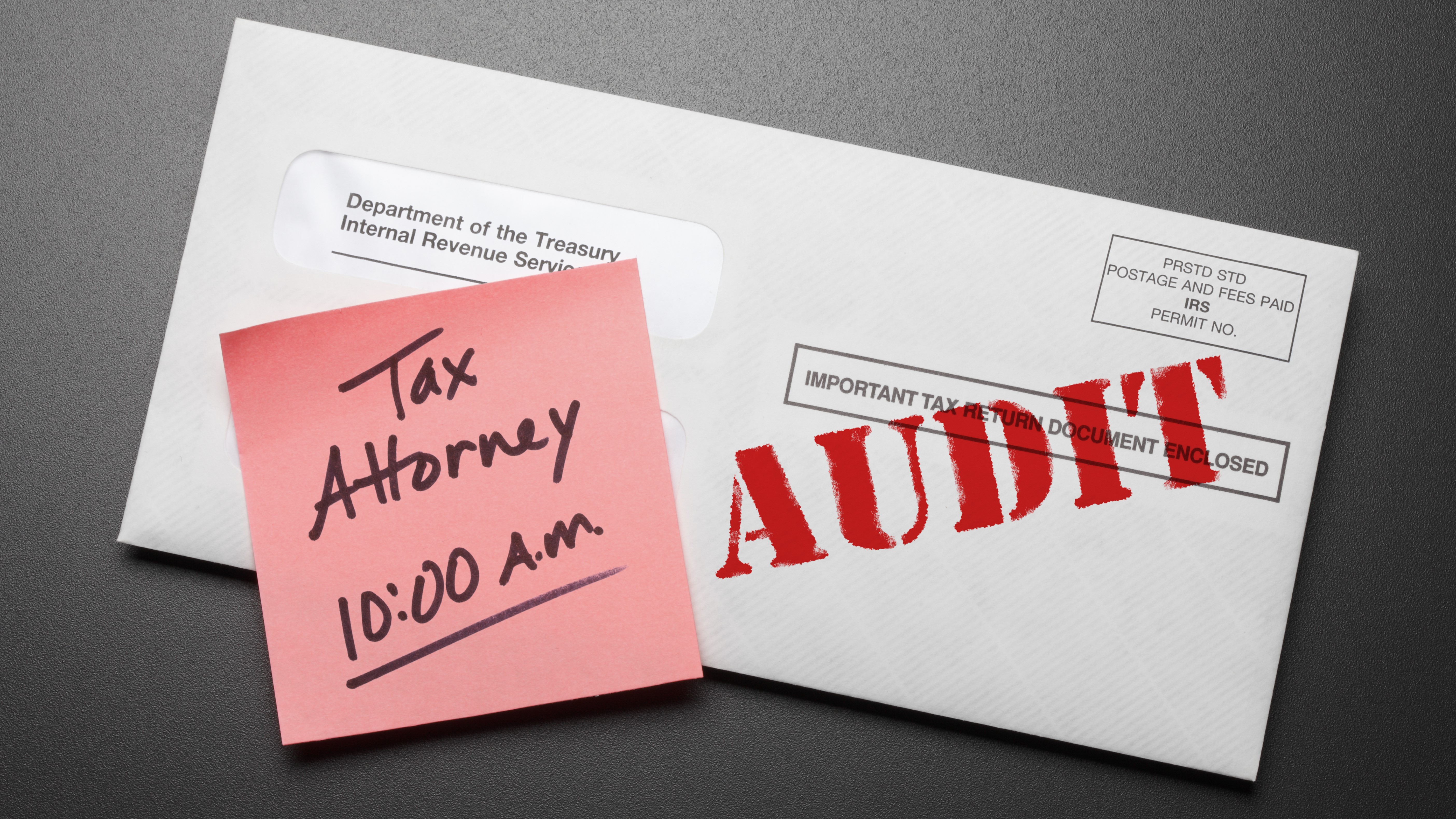More People Are Paying This Tax On Investment Income Each Year: Kiplinger Tax Letter
The number of returns reporting the net investment income tax has more than doubled and revenue from the tax has grown by $38 billion over the past decade.

Getting the right tax advice and tips is vital in the complex tax world we live in. The Kiplinger Tax Letter helps you stay right on the money with the latest news and forecasts, with insight from our highly experienced team (Get a free issue of The Kiplinger Tax Letter or subscribe). You can only get the full array of advice by subscribing to the Tax Letter, but we will regularly feature snippets from it online, and here is one of those samples…
More people each year pay this pesky tax: The 3.8% surtax on net investment income (NII). The tax, which was enacted as part of Obamacare, applies to single filers with modified adjusted gross incomes (AGIs) above $200,000 and to joint filers with modified AGIs over $250,000. The income threshold is $125,000 for married people filing separately. Here, modified AGI is AGI plus tax-free foreign-earned income. The tax is due on the smaller of NII, or the excess of modified AGI over the set income thresholds. NII includes dividends, capital gains, taxable interest, annuities, royalties, passive rents and certain income from passive activities. Distributions from 401(k)s, IRAs, pensions, and the like are not investment income. Nor is tax-exempt interest from municipal bonds. Investment expenses reduce the income subject to the surtax. Trusts and estates can also be hit with the surtax if their 2023 AGI exceeds $14,450 and they have undistributed net investment income.
Unlike many of the federal income tax breaks and income phaseout levels, the individual income levels for the 3.8% NII tax aren’t indexed to inflation each year. The $125,000, $200,000 and $250,000 modified AGI thresholds have stayed stagnant since the tax first took effect in 2013, despite the high growth in wages, income, and gains from sales of real estate and other investment assets. Partly because of this, the number of 1040 returns reporting the NII surtax has more than doubled over the past decade, from 3 million for 2013 returns to 7 million for 2022 returns. Additionally, revenue from the tax has grown by $38 billion during the same period.

Sign up for Kiplinger’s Free E-Newsletters
Profit and prosper with the best of expert advice on investing, taxes, retirement, personal finance and more - straight to your e-mail.
Profit and prosper with the best of expert advice - straight to your e-mail.
GOP and Democratic lawmakers have proposed changes to the 3.8% tax. Not surprisingly, Republicans want to limit the hit of the NII surtax. For example, a GOP Senate bill proposes to raise the $250,000 modified AGI threshold for joint filers to $400,000, so that it is exactly double that of single filers. That bill would also index the three modified AGI thresholds to inflation each year.
President Biden takes a different approach. He wants to expand the NII tax. First, he would hike the rate to 5% for people with over $400,000 of income. More specifically, the tax would rise by 1.2 percentage points on the lesser of NII or modified AGI over $400,000. For other taxpayers, the rate would stay at 3.8%.
Second, Biden has proposed that the surtax cover more business income. Currently, income from a passive activity is NII and is subject to the 3.8% surtax for taxpayers who don’t materially participate in the activity, even if the income is from a business. This rule applies to income from activities engaged in directly and to pass-through income from LLCs, limited partnerships and S corporations. Income from a person’s share of business profits from a pass-through entity in which one materially participates is exempt from the 3.8% tax and the 0.9% surtax on earned income of upper-incomers. Biden would impose the NII tax on income derived from pass-through entities in which an individual materially participates. The change would affect joint filers with incomes over $500,000 and $400,000 for singles.
Third, Biden aims to use revenues from the NII tax to shore up Medicare, to stave off the insolvency of Medicare’s Hospital Insurance Fund. Believe it or not, money from the NII tax, commonly referred to as a “Medicare surtax” has gone into general revenues for years.
This first appeared in The Kiplinger Tax Letter. It helps you navigate the complex world of tax by keeping you up-to-date on new and pending changes in tax laws, providing tips to lower your business and personal taxes, and forecasting what the White House and Congress might do with taxes. Get a free issue of The Kiplinger Tax Letter or subscribe.
Get Kiplinger Today newsletter — free
Profit and prosper with the best of Kiplinger's advice on investing, taxes, retirement, personal finance and much more. Delivered daily. Enter your email in the box and click Sign Me Up.

Joy is an experienced CPA and tax attorney with an L.L.M. in Taxation from New York University School of Law. After many years working for big law and accounting firms, Joy saw the light and now puts her education, legal experience and in-depth knowledge of federal tax law to use writing for Kiplinger. She writes and edits The Kiplinger Tax Letter and contributes federal tax and retirement stories to kiplinger.com and Kiplinger’s Retirement Report. Her articles have been picked up by the Washington Post and other media outlets. Joy has also appeared as a tax expert in newspapers, on television and on radio discussing federal tax developments.
-
 Which Stores Are Closing (and Which Aren’t) for Easter 2025?
Which Stores Are Closing (and Which Aren’t) for Easter 2025?Dozens of major retailers are planning to close their doors on April 20. Find out which of your go-to stores are on the list.
By Rachael Green Published
-
 What 401(k) Savers Near Retirement Can Do Amid Market Volatility
What 401(k) Savers Near Retirement Can Do Amid Market VolatilityWhether retirement is years away, a year or two out, or in the rearview mirror, here's how to handle uncertainty in your 401(k).
By Donna Fuscaldo Published
-
 Expiring Business Tax Breaks And Trump's Tax Plan
Expiring Business Tax Breaks And Trump's Tax PlanThe Tax Letter Four important business tax breaks are likely to be a part of President Trump's tax plan. We'll break them down for you.
By Joy Taylor Published
-
 AMT and Pass-Throughs Add Complex Layers to 2025 SALT Tax Planning
AMT and Pass-Throughs Add Complex Layers to 2025 SALT Tax PlanningThe Tax Letter The state and local tax (SALT) deduction is a key sticking point in President Trump's tax plan.
By Joy Taylor Published
-
 Popular Tax Breaks Are in Danger
Popular Tax Breaks Are in DangerThe Tax Letter A number of tax breaks, including the home mortgage interest deduction, are in peril as lawmakers hunt for revenues to pay for the President's tax plan.
By Joy Taylor Published
-
 Six Hurdles for Trump's Tax Bill
Six Hurdles for Trump's Tax BillThe Tax Letter While the odds for a new tax bill in 2025 are quite good, there are some sticking points that President Trump and Congress will have to work through.
By Joy Taylor Published
-
 The IRS is Pursuing Partnerships and Their Owners
The IRS is Pursuing Partnerships and Their OwnersThe Tax Letter The IRS has many enforcement priorities, and partnership tax noncompliance is near the top of that list.
By Joy Taylor Published
-
 New Law Delivers Tax Breaks to Natural Disaster Victims, But Is It Enough?
New Law Delivers Tax Breaks to Natural Disaster Victims, But Is It Enough?Tax Relief The legislation provides critical tax relief to thousands of natural disaster victims across the country.
By Gabriella Cruz-Martínez Last updated
-
 Universal Savings Accounts Are Like Roth IRAs, But With a Twist
Universal Savings Accounts Are Like Roth IRAs, But With a TwistThe Tax Letter Republican lawmakers and conservative think tanks are proposing a new type of tax-advantaged savings account. Think Roth IRAs, but not just for retirement.
By Joy Taylor Published
-
 Could Millions of Taxpayers Be Facing the AMT (Alternative Minimum Tax) in 2025?
Could Millions of Taxpayers Be Facing the AMT (Alternative Minimum Tax) in 2025?Tax Letter Millions of taxpayers could owe the AMT if Congress allows the tax breaks de-fanged in the 2017 Tax Cuts and Jobs Act to expire.
By Joy Taylor Published